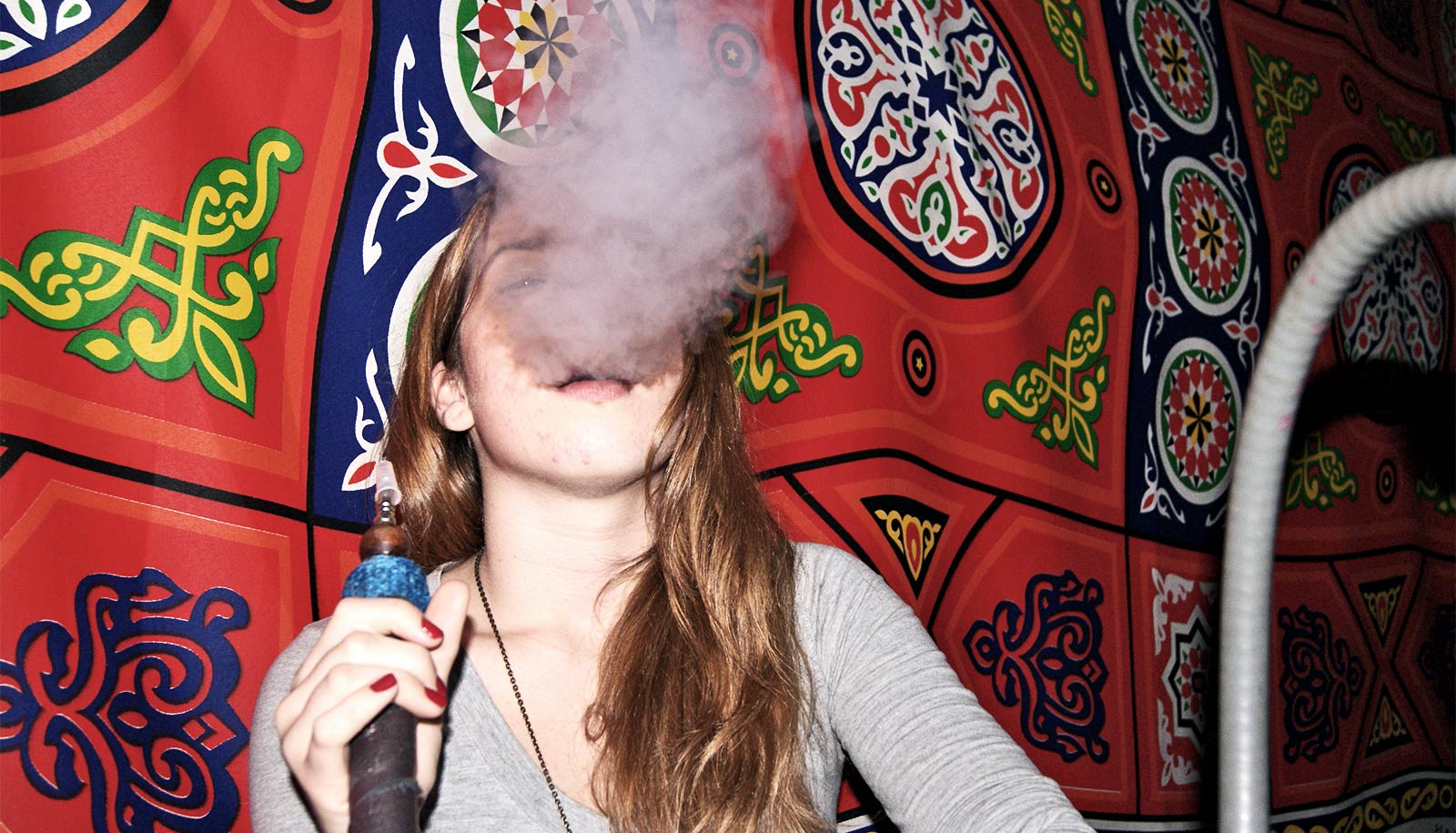Smoking hookah waterpipes could be even more dangerous than other forms of smoking, according to a new study.
Using a custom-built testing apparatus, chemists analyzed emissions during a typical communal waterpipe session and found that one draw from a pipe can contain as many noxious substances as smoke from an entire cigarette. One in five college students in the US and Europe have tried a hookah waterpipe.
“Hookah mainstream smoke—that which is directly inhaled by the user—has many toxic and harmful chemicals, such as nicotine, which can lead to tobacco addiction; irritating carbonyl compounds; and benzene, a known carcinogen,” says Veronique Perraud, an associate project scientist in the chemistry department at the University of California, Irvine and lead author of the paper in Aerosol Science and Technology.
“And due to the greater volume inhaled for every puff and the longer duration of a smoking session, the hookah oftentimes delivers a higher dose of those chemicals to the smoker.”
Ultrafine particles in hookah smoke
The waterpipe also produced an outsized quantity of carbon monoxide, mainly from the burning of charcoal to heat the tobacco or herbal mixture in its bowl. The study refers to several cases in which hookah users have suffered from CO intoxication.
In addition to testing ordinary tobacco, the group studied a nicotine-free herbal mixture, marketed as a healthier alternative, and discovered it had even higher levels of toxic gases present in the mainstream smoke.
While previous studies have detailed the risks of the hookah habit, the new work is the first to characterize ultrafine particles—those with a diameter smaller than 100 nanometers—in the inhaled smoke.
Using a pair of mass spectrometers, the scientists measured the chemical composition of both gases and solids emitted during a hookah session in real time, a key differentiation from past studies.
“Typically, researchers would collect samples from a filter capturing smoke and particles from an entire session, rendering one data point,” Perraud says. “But through our technique of testing emissions in the beginning, midpoint, and end of a smoking session, we were able to show that a smoker is exposed to a higher quantity of ultrafine particles during the first 10 minutes compared to the rest of the time.”
Perraud says these minuscule particles can pose significant health risks because they can make their way deep into the pulmonary system, and the smallest ones can readily cross the blood-brain barrier.
Irritants and carcinogens
“One of the big myths about hookah usage is that the water in the bowl actually filters out the toxic chemicals, providing a shield for the smoker,” Perraud says. “In the study, we show that this is not the case for most of the gases and that, possibly due to its cooling effect, water actually promotes ultrafine particle formation.”
Another difference between hookah and cigarette smoking is the temperature at which the tobacco is combusted. The cooler-burning contents of the hookah bowl produced less complex chemical compositions than occur in cigarette smoke but a heightened amount of sugar derivatives, as well as glycerol. When heated, this normally harmless substance that’s used as a food additive decomposes, creating small aldehydes that are irritants and potential carcinogens.
The National Institutes of Health supported the work, the first of a two-part study. The second phase, in which researchers will examine the specific health effects of waterpipe smoking, is currently underway.
Source: UC Irvine

